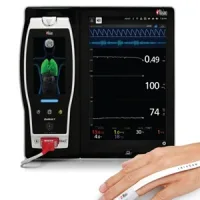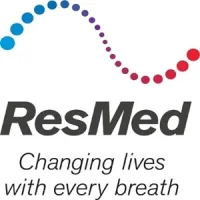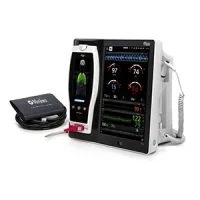Masimo has announced that in a new study that compared acoustic respiration rate (RRa®) from Masimo’s rainbow® Acoustic Monitoring (RAMTM) to respiration rate from conventional capnography, researchers concluded that RAM was useful for monitoring dental patients under intravenous anesthesia.1
The Anesthesia Patient Safety Foundation(APSF) and The Joint Commission recommend continuous oxygenation and ventilation monitoring in all patients receiving opioid-based pain medications.² RAM noninvasively and continuously measures respiration rate using an innovative adhesive sensor with an integrated acoustic transducer that is easily and comfortably applied to the patient’s neck.
The study, published in the Journal of Clinical Monitoring and Computing by Dr. Kentaro Ouchi and colleagues from Japan, compared the respiration rate measurements from RAM and capnography (Psychorich IS nasal cannula and BP-608 Omron Colin monitor) in non-intubated patients with dental anxiety undergoing dental treatment. A total of 1953 data points of respiratory rate were taken from the start to the end of anesthesia. Over the entire observation period, the results showed a significantly higher detection of respiratory rate by RAM (1884 points, 96.5%) than by capnography (1682 points, 86.1%) P < 0.0001. When comparing respiration rate from RAM and capnography during the induction, intraoperative, and emergence periods, the 95% limits of agreement (LOA) were -7.4 to 6.7 , -5.4 to 7.0, -3.9 to 5.3, respectively. The researchers commented that this study was only a comparison between two devices, since neither method could be considered a “corrective control,” or gold-standard reference.
The authors concluded, “In comparison between capnography using a nasal cannula for continuous monitoring for the respiratory rate, the acoustic method is useful during intravenous general anesthesia in unintubated spontaneously breathing patients undergoing dental procedures.” The authors note that the acoustic method might not accurately detect respiratory rate in cases in which a dental air turbine is used.
Source & Image Credit : Masimo
References
1 Ouchi (et al.), Acoustic Method Respiratory Rate Monitoring is Useful in Patients Under Intravenous Anesthesia. J Clin Monit Comput 2016; published online.
2 Stoelting, RK et al. APSF newsletter. 2011. www.apsf.org.
Latest Articles
Masimo,Acoustic Monitoring, anesthesia
Masimo (NASDAQ: MASI) has announced that in a new study that compared acoustic respiration rate (RRa®) from Masimo’s rainbow® Acoustic Monitoring (RAMTM) to respiration rate from conventional capnography, researchers concluded that RAM was useful for moni










